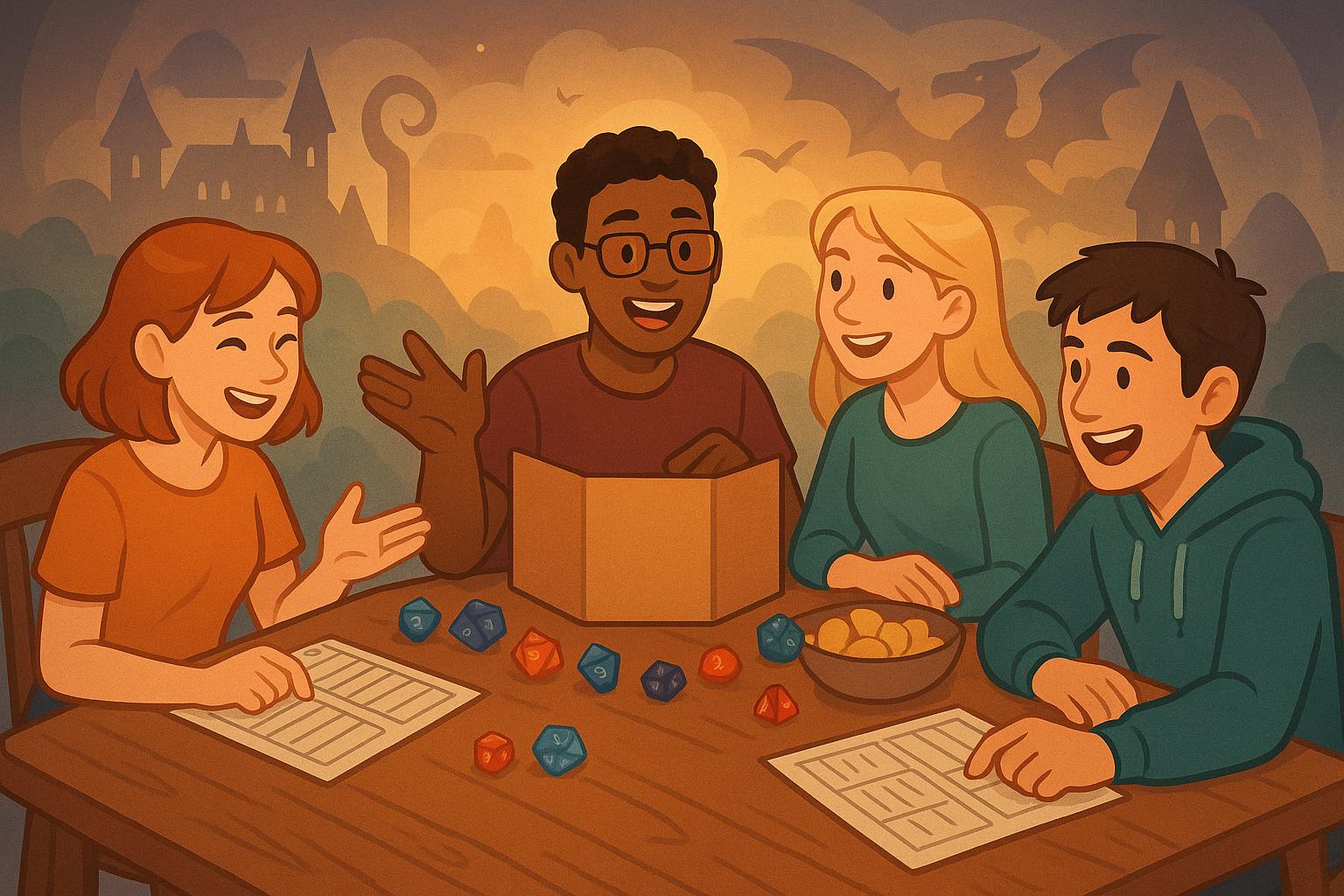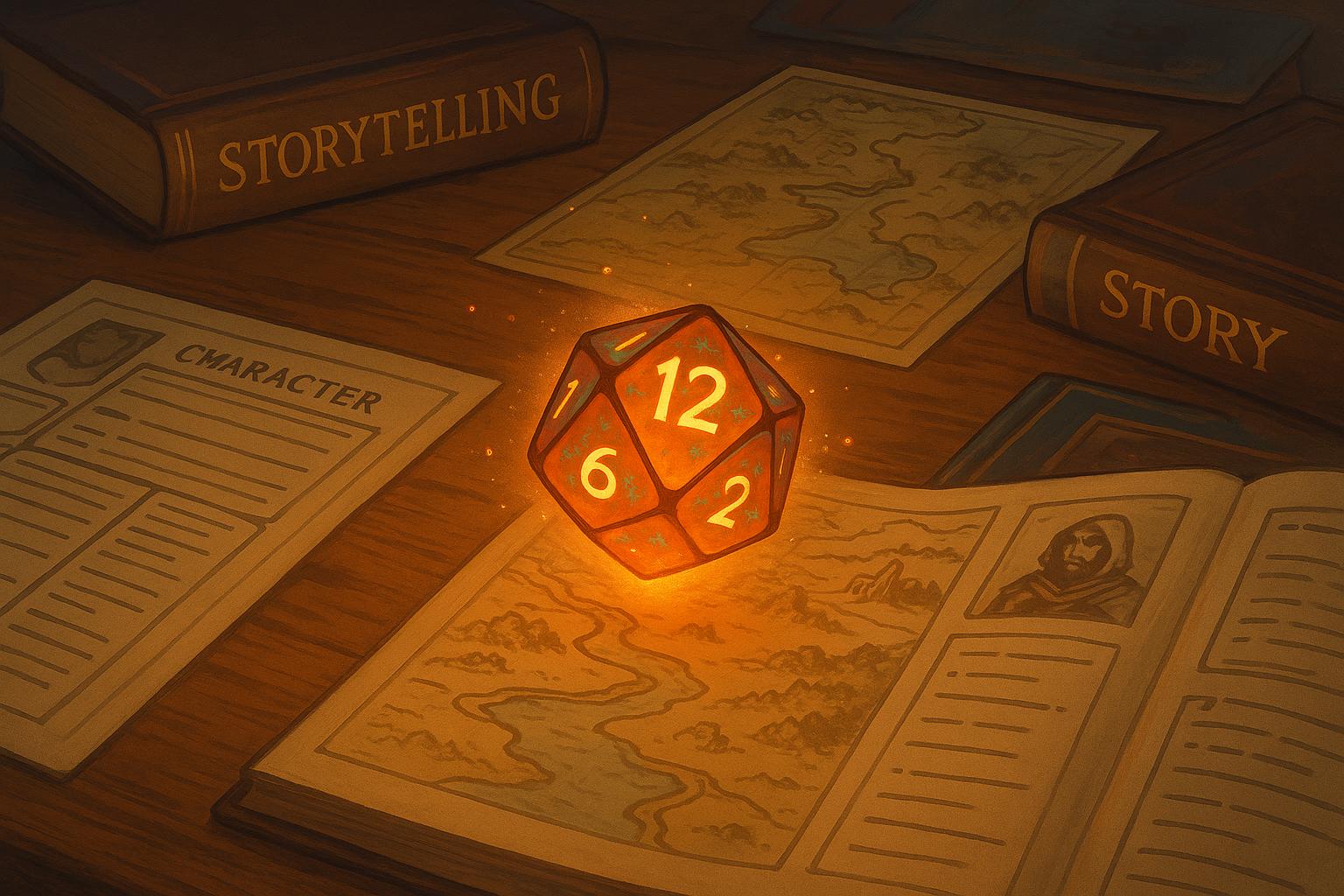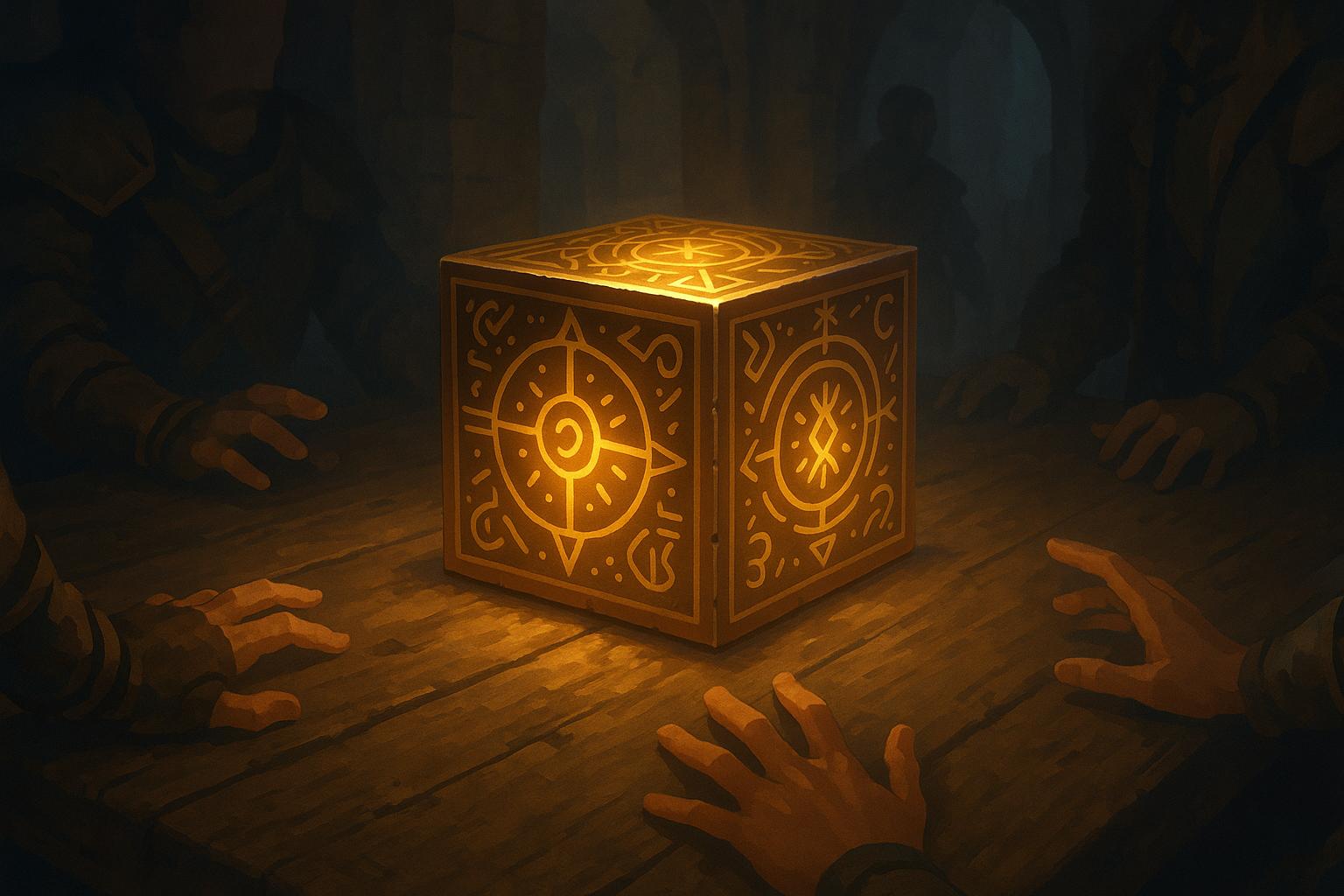Social mechanics in RPGs are systems that guide player interactions, focusing on dialogue, relationships, and influence rather than combat. They are essential for storytelling, offering players non-combat ways to resolve conflicts and shape narratives. Key elements include:
- Relationships & Factions: Systems like Blades in the Dark link player actions to world dynamics through reputation and consequences.
- Balancing Rules & Freedom: Frameworks like Tenra Bansho Zero provide structure without stifling creativity.
- Genre-Specific Design: Games like Monsterhearts and Masks tailor mechanics to fit their themes.
Challenges include avoiding oversimplification, ensuring player agency, and crafting engaging scenarios. Playtesting and balancing player creativity with character stats are vital for success.
| Aspect | Example | Purpose |
|---|---|---|
| Relationships | Blades in the Dark | Connects player actions to the world |
| Player Freedom | Tenra Bansho Zero | Guides without limiting creativity |
| Genre Tailoring | Monsterhearts | Matches mechanics to story themes |
Social mechanics deepen immersion and enhance gameplay by blending structured rules with player-driven storytelling.
Non-Combat Gaming - How to Make Social Mechanics Fun
Key Elements of Social Mechanics
Relationships and Faction Systems
In Blades in the Dark, faction reputation plays a crucial role in connecting player actions to the game's world. Choices made by players directly influence their relationships with both criminal organizations and authorities in Doskvol, creating a web of consequences.
"Mechanics must support the RPG genre. Mechanics and setting must work together",
says Lawrence Whitaker, Co-Founder of The Design Mechanism [4].
Balancing Rules and Player Freedom
While relationships and faction systems add depth, it's essential to strike a balance between structure and flexibility. Rules that are too rigid can limit creativity, while too much freedom can leave players unsure of how to proceed. For example, Tenra Bansho Zero provides a framework that guides interactions without stifling player interpretation [3].
Finding this balance is especially important in social encounters. Players should feel their character's abilities have an impact, but not at the expense of their own creativity and input. It’s about ensuring agency while maintaining consistency in outcomes.
Genre-Specific Social Mechanics
Different genres require tailored approaches to social mechanics. For instance, Monsterhearts captures the emotional turbulence of teen drama, while Masks focuses on the dynamics of young superhero teams [2]. These systems are designed to align with the themes of their respective genres, offering players meaningful choices that feel true to the narrative.
These examples demonstrate how well-crafted social mechanics can deepen immersion and strengthen a game's themes. By understanding these elements, designers can more effectively weave social mechanics into gameplay, enhancing both the story and player experience.
sbb-itb-b8b00a5
Designing Social Mechanics
Integrating Social Mechanics into Gameplay
Adding social mechanics to a game requires thoughtful planning to ensure they work seamlessly with the overall gameplay. These systems should enhance the core experience while keeping players engaged.
The goal is to make social interactions feel like a natural part of the game world. For instance, in Star Crossed, social interactions are designed to resemble dance movements, weaving mechanics into the narrative. Once implemented, these systems must also balance player creativity with the abilities of their characters.
Balancing Player Skill and Character Stats
Key elements of effective social mechanics include:
| Aspect | Implementation | Purpose |
|---|---|---|
| Player Input | Improvisational dialogue and roleplay bonuses | Encourages creative expression |
| Character Stats | Social skill checks | Represents character expertise |
Creating Engaging Social Scenarios
The success of social systems isn't just about mechanics - it also depends on crafting compelling, high-stakes moments. Evan Rowland emphasizes the importance of iterative testing when refining the social mechanics in Noirlandia [5].
"Using game mechanics to direct a game towards the feelings that you get when you experience the inspirational genre is what interests me the most." - Nathan D. Paoletta [1]
Dramatic conversations and nuanced NPC motivations can make social interactions as gripping as combat, all while staying true to the game's themes. Through playtesting, designers can fine-tune these scenarios to deepen the narrative and give players more meaningful choices.
Challenges in Designing Social Mechanics
Avoiding Oversimplification
One major hurdle is capturing the complexity of real-life interactions without reducing them to overly simple mechanics. Simplifying human dynamics too much - like relying solely on dice rolls - can strip away depth and make the experience less engaging. To tackle this, the designers of Tenra Bansho Zero introduced a system where players actively rate social interactions. This adds layers of complexity beyond the usual success/failure outcomes.
Another example is Blades in the Dark, which weaves dynamic consequences into its faction systems. Players are given choices that directly influence their relationships within the game world, making interactions feel more meaningful. By addressing these issues, designers can create systems that resonate with players and provide a richer experience.
Ensuring Player Agency
Creating realistic social mechanics is important, but it’s equally critical to ensure players feel in control of their characters' interactions. Striking a balance between creative freedom and structured rules requires careful design, blending player skills with character stats.
World Wide Wrestling achieves this by integrating social mechanics tailored to wrestling tropes. This allows players to embrace the genre while still steering the narrative in their own way [1]. Such structured systems encourage creativity without feeling restrictive.
Playtesting plays a crucial role here. It helps designers see how players engage with social mechanics, pinpointing areas where agency feels limited or where the system becomes too rigid. Through multiple iterations, designers can refine these mechanics to support creativity while ensuring interactions remain meaningful and guided.
Conclusion and Resources
Key Points
Designing social mechanics in RPGs can be tricky, but insights from seasoned designers offer helpful guidance. These mechanics are crucial for creating meaningful character interactions, requiring a careful balance between structure and player creativity. Paoletta focuses on mechanics that evoke feelings tied to specific genres, while Rowland highlights systems that enhance player imagination. A game like Noirlandia showcases this balance by examining societal structures while still allowing plenty of room for narrative creativity [5].
TTRPG Games Directory

The TTRPG Games Directory is a great tool for players and designers interested in exploring different approaches to social mechanics. It organizes games based on their mechanics, helping players find systems that suit their style - whether they prefer intricate faction dynamics or character-focused storytelling. The directory is especially useful for discovering games with fresh takes on social interaction mechanics, making it easier to find titles that fit specific gameplay interests.


